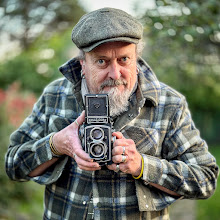Embracing the overall scene and the British misconception of what creates a realistic scenario.
In the USA and many parts of Europe, many railway modellers are still way beyond us on the realism stakes (just look at the content of Voie Libre and Model Railroader magazines in particular), they embrace the overall scene with equal passion. Sadly in the UK, many modellers are still totally obsessed with correct number of spokes, then they'll use bright green lichen and sawdust, which looks nothing like the real world to create their landscape! But, because the loco has the correct number of spokes, things are deemed (by them) more realistic – ‘finescale’ even (whatever ‘finescale’ is).
A good test, is to get somebody to judge a layout who has no interest in railways or even modelling. They will make their judgement, not on the correct gauge or rivet detail, but whether the scene looks and feels like the full sized one they see everyday or remember from their childhood days. Do the trees look like trees? Is the grass fibrous rather than scale green bath sponges? Is that road surface smooth and pale, rather than black with 6 inch square boulders masquerading as tarmac? Is the eye kept within the scene, rather than being attracted to something ugly like a row of houses right on the front edge of the baseboard (with no road or anything separating them from a 4 foot fall), or a siding that again runs just millimetres from the front baseboard edge? Finally, where far too many go wrong, is the colouring of the scene, with many aiming for colours that are far too harsh. I bet they paint their engines the right colour though.
A question for many finescale modellers, I’ve been wanting to ask this for some time: why do so namny of you ballast your steam era sidings with granite chippings and a hard shoulder? We all know it was ash. Look a old pictures of goods yards and sidings, they were even, smooth dusty places. Things like this totally ruin the fact that you may have the correct GWR c.1884 vintage two bolt chairs. Don’t get me wrong, I have nothing against detail, however I feel so often it is completely lost when the rest of the scene has been totally neglected. To enjoy detail, you need to be drawn into the layout in the first place, the closer you get the more you explore, a bit like a good bottle of wine where the flavour and nose develops the longer it lingers. Get it all wrong and you won’t even get to the stage of looking at the detail – however good it is.
OK, rant (almost) over! We are slowly getting better, the likes of Pendon have been enormous inspiration to many modellers over the years. Still sadly, there are too many layouts (often P4/S4 too) out there, where it's pretty obvious that the builders have not looked at the overall scene they’re trying to create. Instead they have, as already mentioned concentrated on the fine detail far too much, at the expense of the bigger picture like the initial design. This then results in a layout that may be ‘finescale’ but doesn’t look at all real. I have a feeling that many model makers look at other layouts to base their model making on rather than the real thing real or looking in a book?
Post rant and inspiration.
Recently I had the honour of photographing two different layouts for the printed page, one of them a large circular 'traditional trainset' and the other, a West Country scenario based on more 'realistic' practices. The 'trainset' really surprised me, especially due to the fact that 95% of what I saw was ready made and out of the box. The modellers however used many of the buildings, thinking particularly of the street scenes, in such a way that it was totally convincing if captured from an angle to hide the roundy-roundy nature of the layout. Basically, they have vision based on looking at the real thing, which is far more important than those wretched GWR chair bolts.
The 'West Country' scenario, whilst like the ‘trainset’ didn't use 'finescale' track (something which we judge layouts by far too much here in the UK), everything was spot on from initial design, track layout and buildings, right through to scenery, and in my book, most importantly the colouring. Again you could tell that the modellers got out and observed the real thing, absorbing the feel and look of a real world. They then put all this together in miniature and have created something quite special. I passed a few of the pictures of these two layouts in front of a couple non-railway modellers the other day, and their words were "is that a model or the real thing".
Flame suit now on.................

